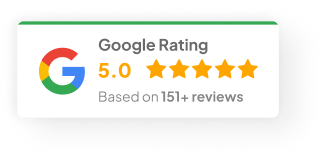19 Sep 25
How to Choose an E-commerce Web Design Company
An e-commerce site isn’t just a website. It’s the shopfront, the sales team, the reputation all rolled into one. People land there, size up the brand, and make a quick call—stay and shop, or bounce. That’s why the choice of web design company isn’t just about looks. It’s a business decision that can make or break growth.
The challenge? There are endless options. Solo freelancers, boutique studios, big agencies with glossy portfolios. Each path has its upside, each one its risks.
Why the Right Design Partner Matters
Design is more than color schemes or trendy fonts. It’s about guiding someone from the homepage all the way to checkout without friction.
Here’s what the numbers tell us:
- 94% of first impressions come down to design
- Good UX design can lift conversions by up to 400%
- Slow load times kill sales. People abandon carts if pages take longer than a few seconds to load.
And when the average online store converts only 2.5–3% of visitors, the margin for error is thin. A confusing menu or sluggish checkout can cost thousands.
Freelancer or Agency?
This is usually the first fork in the road.
Freelancers come cheaper. They’re flexible, can turn things around fast. But with one person handling everything, there are limits—skills, capacity, ongoing support. If they get sick or overloaded, projects stall.
Agencies bring teams: designers, developers, strategists, SEO folks. They look at the big picture. Not just how a site looks, but how it loads, ranks, and scales. Sure, it costs more. But the trade-off is a site that’s future-proofed and built for revenue, not just for show.
What to Check Before Signing
If leaning toward an agency, there are a few things worth digging into:
- Portfolio: Live e-commerce examples you can click through. Fast, clean, mobile-ready.
- Conversion chops: Do they use A/B testing, heatmaps, or real data to improve sales?
- Technical side: Speed, responsiveness, tidy code.
- SEO basics: Optimized URLs, metadata, mobile-first layouts.
- Security: SSL, safe payment gateways, customer data protection.
- Communication: One main contact, clear updates. Avoids crossed wires.
- Support: Post-launch fixes and updates so the site doesn’t get stale.
- Reputation: Reviews, case studies, client feedback.
A Simple Way to Choose
No one wants to drown in proposals, so here’s a straightforward process:
- Get clear on goals—faster checkout, stronger branding, more sales
- Shortlist a handful of agencies that show relevant work
- Compare what’s on offer, not just price
- Ask for proof—case studies, metrics, client wins
- Run their live projects through Google PageSpeed Insights
- Meet the team, see if there’s a fit
- Lock down who owns the code and assets
- Agree on KPIs so progress can be tracked
Why Chromatix Works
Some agencies polish the visuals and stop there. Chromatix focuses on the part that matters most—whether the site sells.
- Conversion-driven design guides every layout decision
- Speed and performance are baked in
- Mobile comes first, desktop second
- Long-term support keeps sites sharp after launch
That mix of creativity, strategy, and technical know-how has built a track record of e-commerce sites that drive revenue, not just pageviews.
Wrapping Up
An e-commerce website is the engine of an online business. The wrong design partner can quietly cost thousands, while the right one lays a foundation for growth.
Freelancers suit smaller projects, but agencies often bring the muscle needed to compete seriously. For anyone aiming beyond “just a nice-looking storefront,” the smarter move is working with an experienced e-commerce agency.
Ready to build an e-commerce site that actually sells? Talk to Chromatix today.


